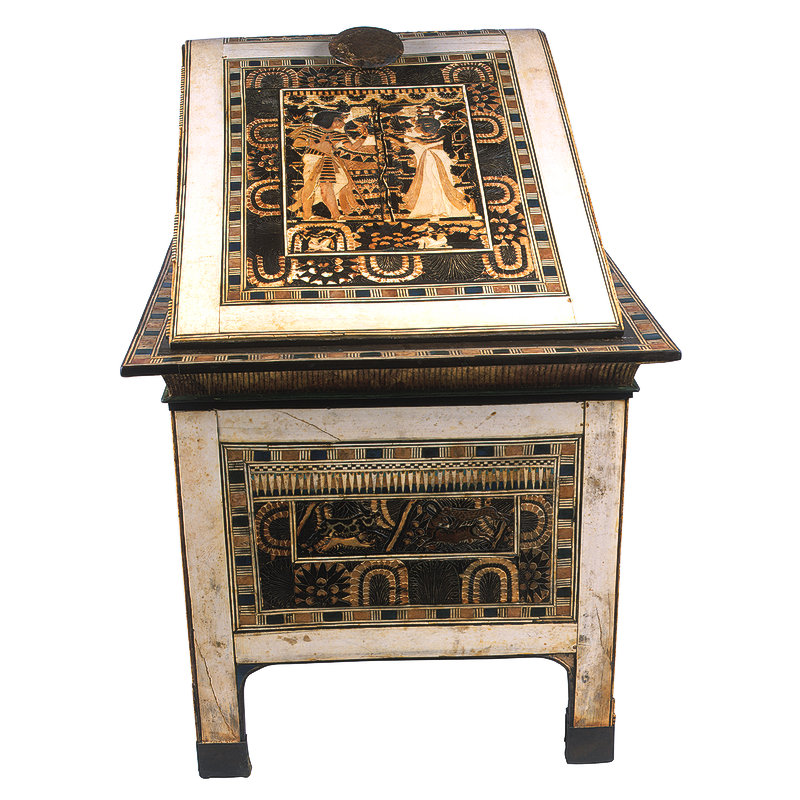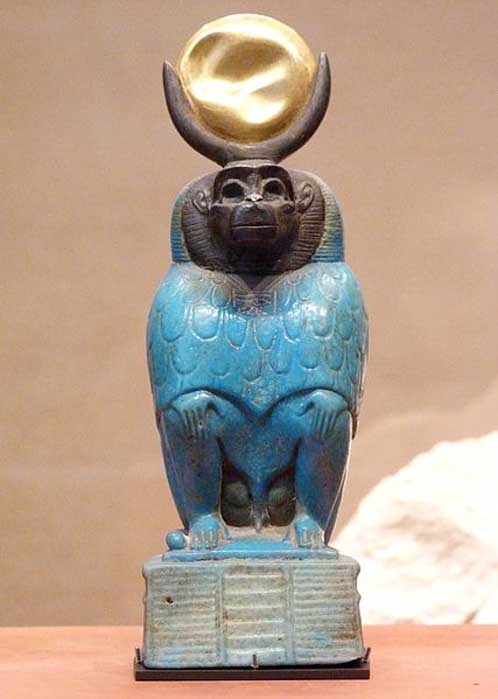
1/ T-91 of Tutankhamun 100 day countdown. Today ritual objects & tools. #Egypt #Archaeology #Tutankhamun #Tutankhamen #Toutankhamon #Tutancâmon #Tutanchamun #توتعنخآمون #Tut #Tut100 #Tutankamón #ツタンカーメン #图坦卡蒙 #圖坦卡蒙 #Τουταγχαμών #тутанхамон #투탕카 #תותאנקאמון 

2/ Egyptians tombs contained magical objects & equipment to ensure the deceased's rebirth in the Afterlife. Models of tools, food offerings & ritual implements assisted the dead. In the Middle Kingdom, models of buildings, ships, and scenes of daily life like this granary model 

3/ Here is Tutankhamun's granary model. He also had this model mill & stone to grind grain, although he never did such labor in life 



4/ We saw Tutankhamun's boat models in an earlier post. His tomb contained model carpentry tools including adzes, chisels, & saws. Miniature models & full sized ceremonial replicas were not for use in this world 

6/ Several adzes found in Tutankhamun's tomb. These were carpentry tools equivalent to a plane. Most utilitarian, but the color image is a bronze adze with gilded hieroglyphs 



7/ Carter found an array of exotic magical & ritual object to protect Tutankhamun's mummy & assist him in the Underworld. This plan of the burial chamber shows objects around & within the set of gilded shrines surrounding the sarcophagus & golden coffins. Note the oars on right 

8/ Between the outer shrine & burial chamber wall were several model steering oars to guide the king's nautical journey through the underworld with its otherworldly version of the Nile River. Small projectiles on the oar pole are the tillers 



9/ Small niches in the burial chamber walls contained "magic bricks". Tutankhamun's were ritual figures of gods & the "Djed-symbol" meaning "stabilitiy" There is also a "mummified" figure of Anubis as a Jackal, prehaps refering to his title "he-who-is-in-the-wrappings" 

11/ Two "architectural" models represent idealized shrines or temples. Made of wood and covered with black pitch. This one shows two pylon-towers of a temple gateway with a tall "Hes-vase" between them. 

12/ another ritual model of two shrines with magical symbols within and between them made of faience. The shrines & base are coated with thick layer of black varnish but have linen lining inside. The shrines have double door leaves 

13/ The strangest, and most beautiful of these ritual objects were the two "Anubis fetish" symbols made of gilded wood set in calcite (alabaster) bases. 

14/ The Anubis fetish was sacred to Anubis & Osiris. A painted wood statue of Anubis #Anubis #Mythology 

16/ An actual Anubis fetish now in Metropolitan Museum of Art, New York. The Jackal carcass is wrapped, recalling Anubis' fetish "He-who-is-in-the-Wrappings" It sits in a red clay cup like the tomb scene. No actual jackal inside. 

17/ Tutankhamun's Anubis fetish has an alabaster "cup" base with his names & titles. Both were placed in tall wooden shrines because the symbol represented the god. The inscription calls the king "beloved of Anubis-who-is-in-front-of-his-booth-shrine" 

18/ The king became Osiris in the Afterlife. These fetishes were sacred both to Osiris and to Anubis, the god of mummification. They were powerful magical devices in the afterlife. The 2 Anubis fetishes were enclosed in tall shrines #Egypt #Archaeology #Mythology 



19/ Osiris was also the god of crops. Egyptian tombs often had a "corn Osiris". A bBox shaped like Osiris was filled with wheat seed & watered when the tomb was sealed. The seeds germinated, magically sparking tomb owners rebirth in Underworld as Osiris 

Follow me for Tutankhamun 100 day countdown until November 4 #Tutankhamen #Toutankhamon #Archaeology #Tutancâmon #エジプト #Tutanchamun #توتعنخآمون #Tutankamón #ツタンカーメン #图坦卡蒙 #圖坦卡蒙 #тутанхамон #투탕카 #Egypte #Ägypten #Egitto #Єгипет #Τουταγχαμών #Τουταγχαμών #مصر 

• • •
Missing some Tweet in this thread? You can try to
force a refresh


















